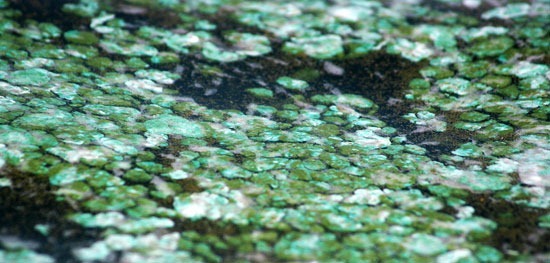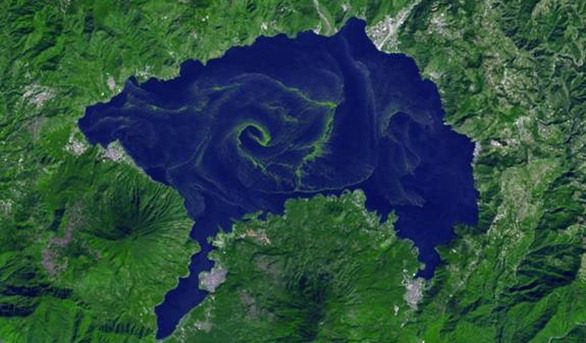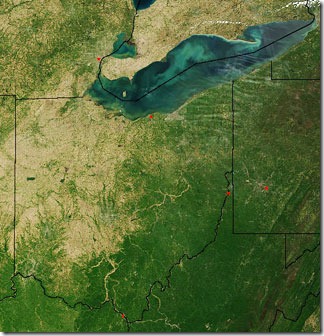Climate Change Spurring Toxic Algal Blooms In Great Lakes
0The impacts of climate change to the Great Lakes are expected to be broad and far-reaching, affecting heat waves, crop production and air quality in the region.
Harmful algal blooms, like the one impacting Toledo’s drinking water in early August, are also expected to become more frequent. But how is climate change linked to the scourges of green sludge?

Lake Erie’s western basin as seen from space, August 1, 2014. (Credit: NASA Earth Observatory)
According to WKYC, the realities of a shifting climate influence Great Lakes toxic algal blooms in several ways:
- Rising water temperatures encourage growth rates of toxin-producing cyanobacteria, like Microcystis;
- milder winters and warmer springs lengthen algae growing seasons;
- extreme weather events that bring heavy amounts of precipitation increase the runoff of algae-fueling nutrients;
- and increased stratification brought about by warmer water temperatures creates stable thermoclines where algae can feed on nutrients and block sunlight to other aquatic life.

The Lake Erie shore at Reno Beach-Howard Farms, 10 miles east of Toledo, Ohio. (Credit: U.S. Army Corps of Engineers)
Warmer air temperatures may also increase evaporation in the Great Lakes, spurring a rise in salinity that can stress certain types of cyanobacteria into releasing toxins. And warmer temperatures overall appear to make it easier for algae to grow with lessened nutrient resources.













